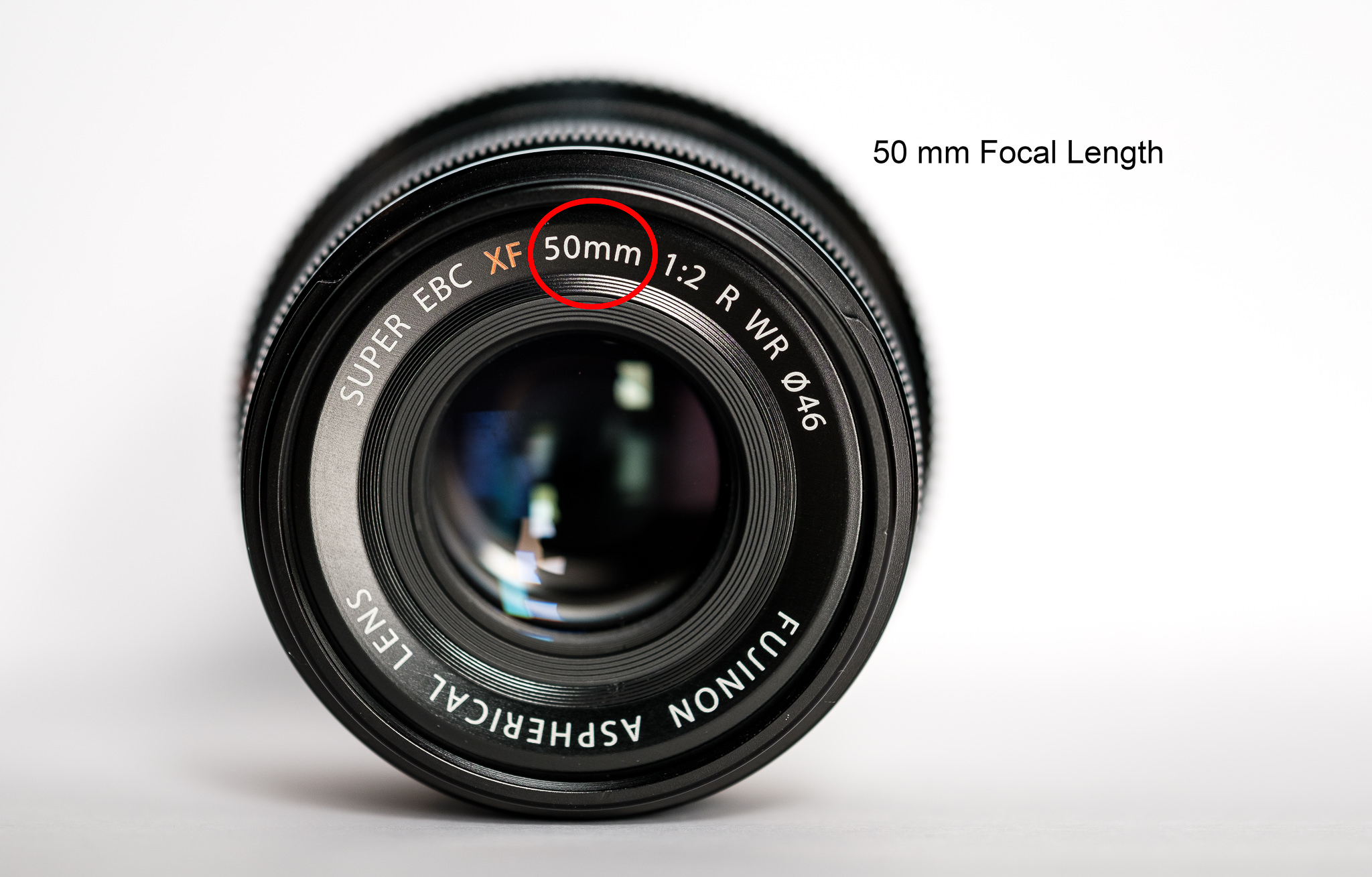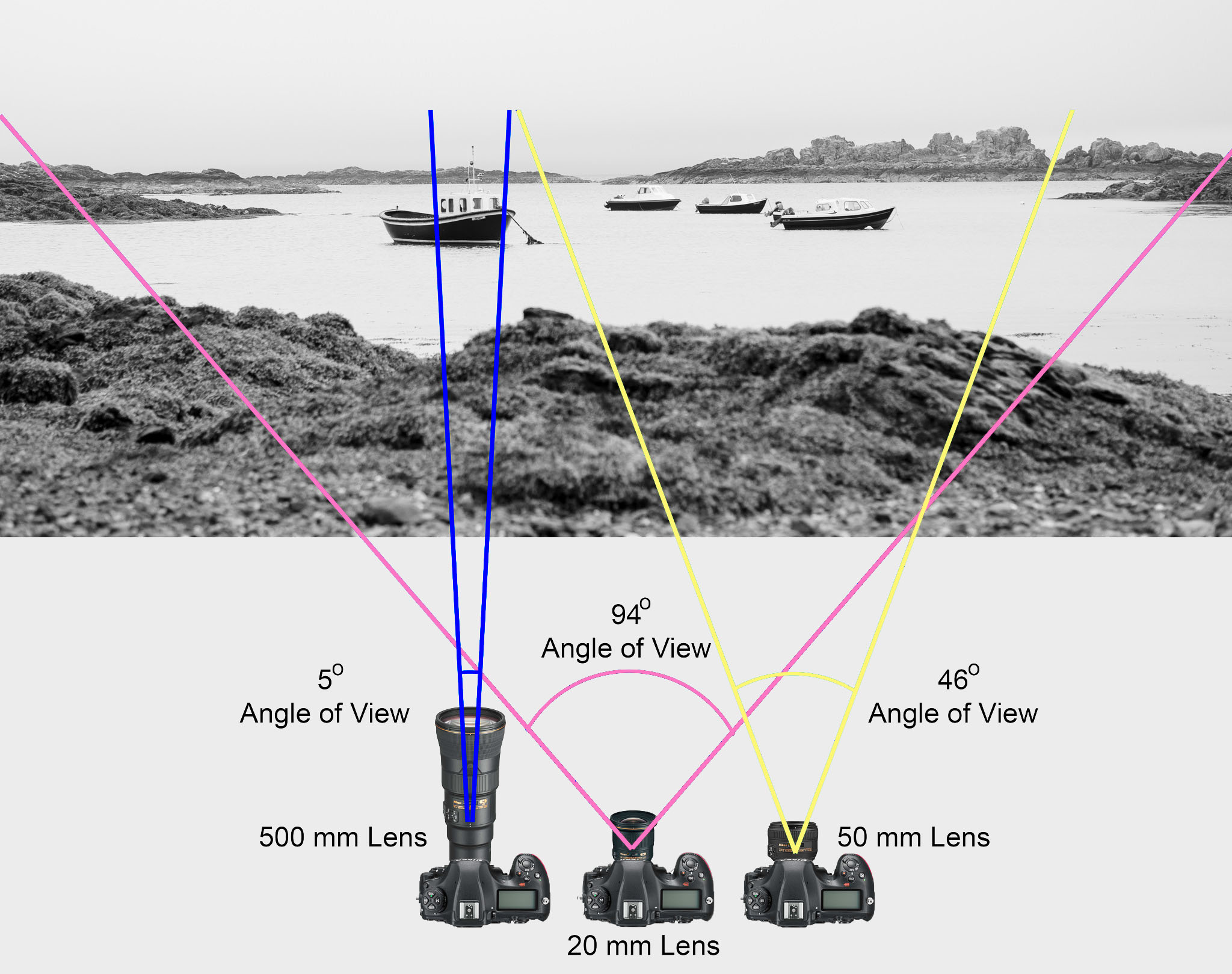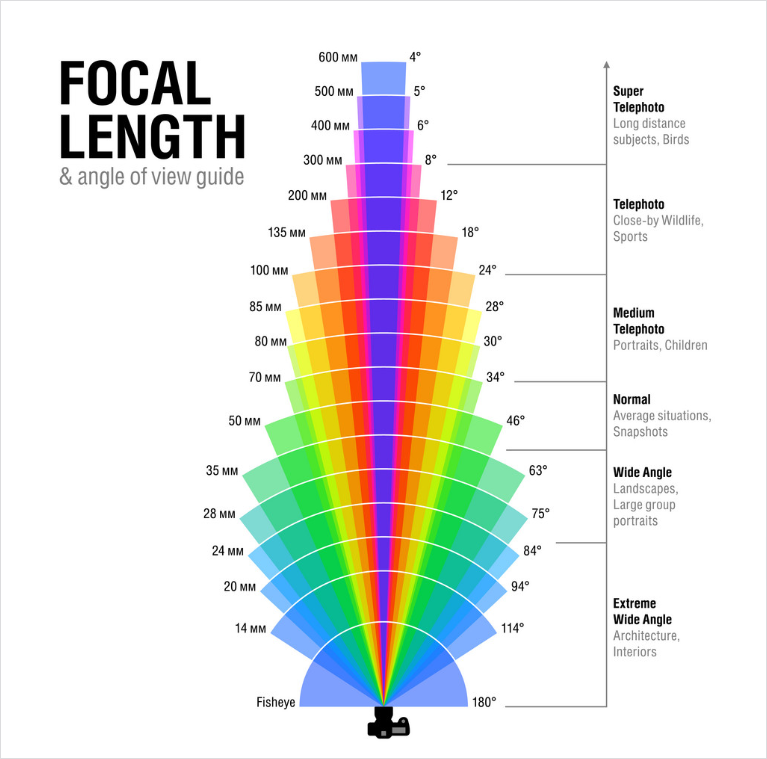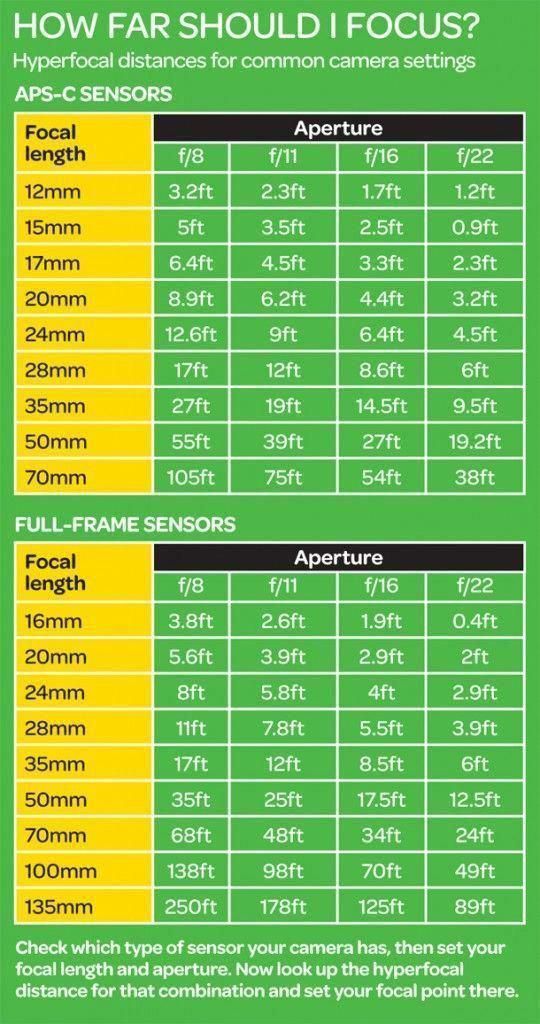-
Macro photography stacking
The main question being: Is it better to use a macro rail or is it better to vary the focus of the lens?
-
Photography basics: Focal length reference charts
https://en.wikipedia.org/wiki/Focal_length
The focal length of an optical system is a measure of how strongly the system converges or diverges light.
Without getting into an in-depth physics discussion, the focal length of a lens is an optical property of the lens.
The exact definition is: Focal length measures the distance, in millimeters, between the “nodal point” of the lens and the camera’s sensor.
Lenses are named by their focal length. You can find this information on the barrel of the lens, and almost every camera lens ever made will prominently display the focal length. For example, a 50mm lens has a focal length of 50 millimeters.

In most photography and all telescopy, where the subject is essentially infinitely far away, longer focal length (lower optical power) leads to higher magnification and a narrower angle of view;
Conversely, shorter focal length or higher optical power is associated with lower magnification and a wider angle of view.
On the other hand, in applications such as microscopy in which magnification is achieved by bringing the object close to the lens, a shorter focal length (higher optical power) leads to higher magnification because the subject can be brought closer to the center of projection.
Focal length is important because it relates to the field of view of a lens – that is, how much of the scene you’ll capture. It also explains how large or small a subject in your photo will appear.

(more…) -
flexclip.com – powerful online video maker and editor
FlexClip is an easy yet powerful video maker that helps you create videos for any purposes. Here are some of its key features:
* Millions of stock media choices (video clips, photos, and music).
* A clean and easy-to-use storyboard to combine multiple photos and clips.
* Flexible video editing tools: trim, split, text, voice over, music, custom watermark, etc.
* HD video export: 480P, 720P, 1080P. -
MovieLabs and Hollywood Studios Publish White Paper Envisioning the Future of Media Creation in 2030
The main limitation that our technology future forecasts is a challenge in speed while supporting valid data to the user base.
Generally speaking, data can change after being stored locally in various databases around the world, challenging its uber validity.
With around 75 billion users by 2030, our current infrastructure will not be able to cope with demand. From 1.2 zettabytes world wide in 2016 (about enough to fill all high capacity 9 billion iphone’s drives), demand is planned to raise 5 times in 2021, up to 31Gb per person.
While broadband support is only expected to double up.This will further fragment both markets and contents, possibly to levels where not all information can be retrieved at reasonable or reliable levels.
The 2030 Vision paper lays out key principles that will form the foundation of this technological future, with examples and a discussion of the broader implications of each. The key principles envision a future in which:
1. All assets are created or ingested straight into the cloud and do not need to be moved.
2. Applications come to the media.
3. Propagation and distribution of assets is a “publish” function.
4. Archives are deep libraries with access policies matching speed, availability and security to the economics of the cloud.
5. Preservation of digital assets includes the future means to access and edit them.
6. Every individual on a project is identified and verified, and their access permissions are efficiently and consistently managed.
7. All media creation happens in a highly secure environment that adapts rapidly to changing threats.
8. Individual media elements are referenced, accessed, tracked and interrelated using a universal linking system.
9. Media workflows are non-destructive and dynamically created using common interfaces, underlying data formats and metadata.
10. Workflows are designed around real-time iteration and feedback.
-
Sean Carroll On Laplace’s Demon
Given a some level of omniscent entity or computer, future and past can be revealed at some level of probability.
COLLECTIONS
| Featured AI
| Design And Composition
| Explore posts
POPULAR SEARCHES
unreal | pipeline | virtual production | free | learn | photoshop | 360 | macro | google | nvidia | resolution | open source | hdri | real-time | photography basics | nuke
FEATURED POSTS
Social Links
DISCLAIMER – Links and images on this website may be protected by the respective owners’ copyright. All data submitted by users through this site shall be treated as freely available to share.






